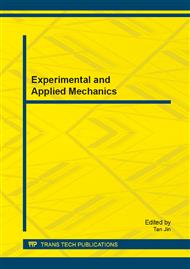[1]
Kaslilar, A., et al., Estimating the Location of a Tunnel Using Correlation and Inversion of Rayleigh‐wave Scattering. Geophysical Research Letters, (2013).
DOI: 10.1002/2013gl058462
Google Scholar
[2]
Shibuya, K., Y. Kawamura, and H. Saito, Time-resolved determination of ortho-positronium kinetic energy utilizing p-wave scattering during positronium-xenon collisions. Physical Review A, 2013. 88(4): p.042517.
DOI: 10.1103/physreva.88.042517
Google Scholar
[3]
Bellen, A. and M. Zennaro, Numerical methods for delay differential equations. 2013: Oxford University Press.
Google Scholar
[4]
Yao, K. and X. Chen, A numerical method for solving uncertain differential equations. Journal of Intelligent and Fuzzy Systems, (2013).
Google Scholar
[5]
Bi, L., et al., A numerical combination of extended boundary condition method and invariant imbedding method applied to light scattering by large spheroids and cylinders. Journal of Quantitative Spectroscopy and Radiative Transfer, (2013).
DOI: 10.1016/j.jqsrt.2012.11.033
Google Scholar
[6]
Saenger, E.H., N. Gold, and S.A. Shapiro, Modeling the propagation of elastic waves using a modified finite-difference grid. Wave motion, 2000. 31(1): pp.77-92.
DOI: 10.1016/s0165-2125(99)00023-2
Google Scholar
[7]
Levander, A.R., Fourth-order finite-difference P-SV seismograms. Geophysics, 1988. 53(11): pp.1425-1436.
DOI: 10.1190/1.1442422
Google Scholar
[8]
Saenger, E.H. and S.A. Shapiro, Effective velocities in fractured media: a numerical study using the rotated staggered finite‐difference grid. Geophysical Prospecting, 2002. 50(2): pp.183-194.
DOI: 10.1046/j.1365-2478.2002.00309.x
Google Scholar
[9]
Gao, J. and Y. Zhang, Staggered-Grid Finite Difference Method with Variable-Order Accuracy for Porous Media. Mathematical Problems in Engineering, 2013. (2013).
DOI: 10.1155/2013/157071
Google Scholar
[10]
Lambert, M. -A., et al., Numerical simulation of ambient seismic wavefield modification caused by pore-fluid effects in an oil reservoir. Geophysics, 2013. 78(1).
DOI: 10.1190/geo2011-0513.1
Google Scholar
[11]
Yan, H. and Y. Liu, Acoustic VTI modeling and pre-stack reverse-time migration based on the time–space domain staggered-grid finite-difference method. Journal of Applied Geophysics, 2013. 90: pp.41-52.
DOI: 10.1016/j.jappgeo.2012.12.008
Google Scholar
[12]
Frankel, A. and R.W. Clayton, Finite difference simulations of seismic scattering: Implications for the propagation of short‐period seismic waves in the crust and models of crustal heterogeneity. Journal of Geophysical Research: Solid Earth (1978–2012), 1986. 91(B6): pp.6465-6489.
DOI: 10.1029/jb091ib06p06465
Google Scholar
[13]
Holliger, K., A. Green, and C. Juhlin, Stochastic analysis of sonic logs from the upper crystalline crust: methodology. Tectonophysics, 1996. 264(1): pp.341-356.
DOI: 10.1016/s0040-1951(96)00135-7
Google Scholar


